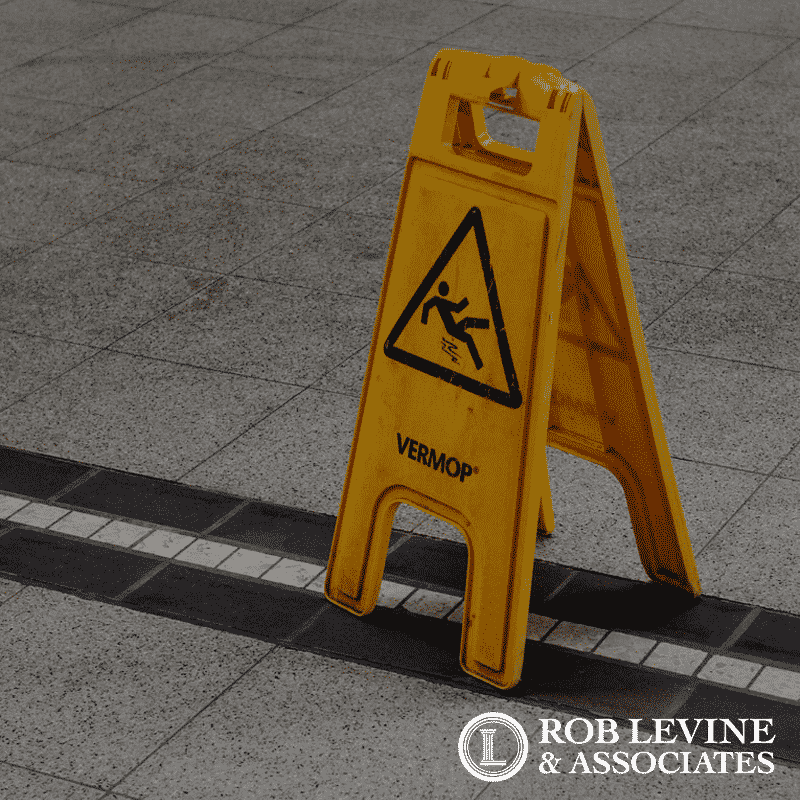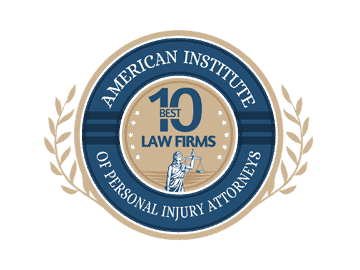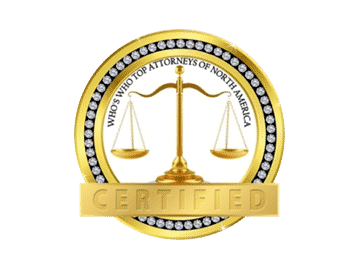Slip and Fall
What is it?
Slip and falls occur when someone sustains an injury on public or private property due to unsafe premises. Slip and falls are a common type of personal injury and can happen anywhere to anyone. If someone experiences a personal injury from a slip and fall, they may be eligible to make a case against a liable party to receive compensation. The first thing you should do is reach out to a professional that specializes in personal injury cases like Rob Levine & Associates. Rob Levine & Associates will ensure your case is being carefully handled while they communicate the process to you every step of the way.
When establishing a slip and fall case, there are three main factors. The hazard, the physical injury, and the liable party. The trip hazard is the actual object or hazard that caused the victim to fall and sustain injuries. The physical injury describes the trauma to the body from the slip and fall. Lastly, someone must take responsibility for the incident that occurred.
Trip hazards
Trip hazards come in many forms, but the most common trip hazards are often invisible to the eye. The National Standards for the Physical Inspection of Real Estate defines a trip hazard as a “Hazard caused by an abrupt change in vertical elevation or horizontal separation on any walking surface” (2021). A slip and fall commonly is initiated by a trip hazard but is not limited to just a trip hazard. Slip and falls can happen from slipping on a substance that breaks an individual’s stability to the ground. We see frequent cases of individuals falling and sustaining injuries when there is a lack of safety standards at play. Accidents happen all the time, to decipher between a clumsy accident and a slip and fall case, there are standards set to qualify a proper trip hazard. The trip hazard must be something that could have been remedied with proper maintenance to the property or cautionary signs.
Examples of these hazards include but are not limited to:
- Spills
- Potholes
- Cluttered walkways
- Ice and snow
- Poor lighting
If any of these hazards are present on a property, the owner can be held liable for the negligence of safety if someone is injured.
Physical Injuries
As soon as you are affected by a slip and fall you must notify the owner. Depending on the hazard there are various injuries associated with a slip and fall accident. Noted injuries include sprains, fractures, abrasions, bruises, and strains. If the fall is intense, victims can sustain broken hips and head injuries that can leave a lasting impact on their physical condition. If the victim is injured to any degree, they are entitled to treatment at the hands of the liable party. The physical injuries, like the trip hazard, work as evidence against the liable parties. The intensity of the injury can tell attorneys a lot about the unsafe conditions on the property and how much compensation the victim might have the right to. The victim’s medical records must be analyzed by an attorney to determine treatment costs. These costs will be included in the overall settlement costs.
Property Owner Liability
The biggest piece in establishing your slip and fall claim is confirming who’s liable for the injury if anyone. If there was proper risk management by the owner, you could be considered ineligible for a case. A proper slip and fall can only be verified as a case if specific standards are met. When lawyers establish a cause of injury and a liable party, your case will be worked through. The liable party can be a private business owner, a public establishment, or even a private home. They will be obligated to cover the cost of compensation and treatment for the victim. On average, slip and fall settlement offers can range from $10,000 to $50,000. Every slip and fall case is unique and the standards and laws vary from state to state.
In Rhode Island, compensation is based on who is at fault. In many cases in RI, the property owner is not always considered one hundred percent at fault. If the court decides that the victim should take partial fault for being in that situation, they will have their percentage of fault split with the property owners. Rhode Island state law is also backed by a statute of limitations. A statute of limitations is a deadline created per state regarding how long you can wait to file a claim after the incident occurred. After this time passes, you no longer are considered to have the right to voice that claim in front of a jury. In our state, the status of limitations is set for 3 years after a personal injury has occurred. In the special case that property itself was damaged, Rhode Island can give you up to 10 years to settle your claim.
Prevention
Anyone who owns property must ensure their space is hazard-free to limit the likeliness of someone falling on their premises. As a result, a property owner won’t have to deal with any legalities associated with a slip and fall. As a property owner, it’s crucial to maintain safety standards for others and oneself. If there is frequent traffic in your establishment provide clear warnings if there is a hazard present. Make sure areas on your property are well illuminated and clear of clutter. Stay up to date on weather conditions and how they can affect the risk of a slip and fall on your property. Use ice salts frequently on staircases and other areas. Another key factor in preventing these accidents or preparing for them is knowing the laws around liability on your property. Get to know your rights and the right of others on your property.
Regardless of if you are the owner of the property or the victim of the injury don’t handle the situation alone. Contact a professional personal injury attorney to help you get through the legal process of the claim. Rob Levine & Associates can ensure your claim is handled to get you the justice you deserve. Contact the firm today to find out more about your slip and fall claim.









